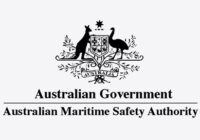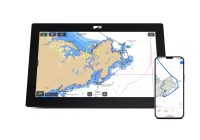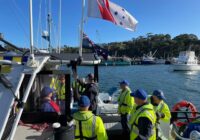Safety Reminder – Older Boats Need Extra Care
As boats age, hidden issues can develop—especially in vessels over 15 years old. Problems with hull integrity are becoming more common and, in some cases, have led to tragic outcomes. Regular checks and maintenance are essential to keeping your boat safe on the water.
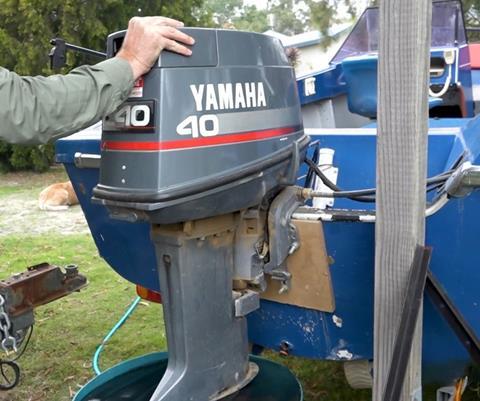
Aluminium Boats
- Look for electrolysis and fractured welds. Corrosion often starts in the bilge if debris or dissimilar metals are left in contact.
- Inspect hard points where seats, frames or ribs meet the hull—these are common areas for fatigue and cracking.
Fibreglass Boats
- Check for delamination and stress fractures, especially around bulkheads and load-bearing areas.
- Inspect the transom carefully. Water ingress can rot the timber core and weaken structural strength—particularly if the outboard has been replaced.
- Remove plugs or flooring to look for signs of rot, cracking or movement.
Quick Transom Checks
- Lift the outboard and test for flex or movement.
- Tap the transom— a dull sound may signal hidden rot.
- Look for cracks around engine mountings.
Many of these problems aren’t visible at first glance. If in doubt, book a professional inspection.
Don’t Forget Auxiliary Propulsion
For boats under 6 metres, auxiliary propulsion isn’t optional—it’s a legal requirement and a vital safety backup. The system you carry must be capable of getting you home if your main engine fails.

Compact paddles might be easy to store, but they won’t move a 5-metre fibreglass boat back to shore. Choose auxiliary propulsion that’s practical for your vessel. Options include:
- A properly sized auxiliary outboard—well-maintained and ready for use
- Oars or paddles suitable for the weight and size of your boat.
The goal is simple – if your motor cuts out, you must be able to make your way back safely.
Check your auxiliary propulsion before every trip; it could be the difference between a minor inconvenience and a major incident.
Brown Trout Opening Weekend – Safety and Compliance Checks
MAST recently joined a statewide interagency operation for the opening of the Brown Trout season. Led by the Inland Fisheries Service and supported by Tasmania Police and Parks and Wildlife Service, the focus was on fisheries compliance and the safe use of inland waterways.
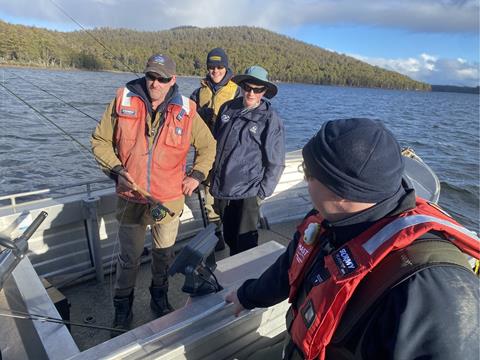
Over the weekend, 58 boats and three lightweight craft were checked at multiple locations. Inspections focused on safety equipment requirements, and it was pleasing to see many skippers meeting their obligations.
A small number of issues were identified—mainly around licence and registration requirements. This is a good reminder to always ensure your boat licence and vessel registration are current before heading out.
MAST officers will continue to conduct regular safety checks at ramps and on the water. These checks are an important part of MAST’s ongoing efforts to educate boaters and encourage safe behaviour on Tasmanian waterways.
MAST thank all skippers who cooperated and helped make the opening weekend a safe and enjoyable one.
Know Your Lateral Marks
Lateral marks—better known as port and starboard marks—guide you safely through channels, harbours and other marked waterways. Knowing how to read them is essential for safe navigation.
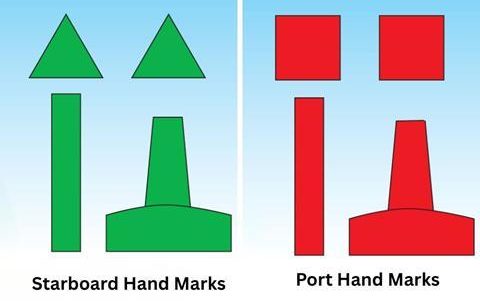
Port Hand Marks (Red)
- Painted red with a can-shaped top mark or buoy
- If lit, they display a flashing red light
- When entering a harbour, keep port marks to your port (left) side
Starboard Hand Marks (Green)
- Painted green with a cone-shaped top mark or buoy
- If lit, they display a flashing green light
- When entering a harbour, keep starboard marks to your starboard (right) side
When Marks are in Pairs
- If red and green marks are placed together, the safe channel lies between them.
When Marks are Single
Often, marks aren’t paired, so the “coming in, going out” rule applies:
- Entering harbour: red to your left, green to your right
- Leaving harbour: red to your right, green to your left
Remember:
“Port to Port when returning” is a simple way to recall which side the port mark should be on when coming back in.
Knowing and following these rules ensures you travel the safest path and avoid hazards in narrow or busy waterways.
Facilities Update
Lewisham
The Lewisham facility reopened to the public on 22 August 2025. The site now features new northern and southern jetties, each with two deck heights to accommodate berthing at different tidal ranges. The northern jetty has also been fitted with wave panels to help protect the boat ramp from wave action coming from the north-west.
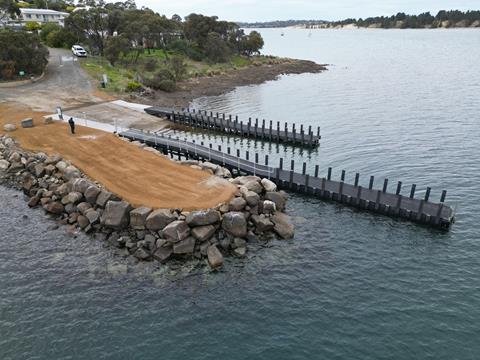
Port Sorell Dredging
In early August, MAST carried out seabed excavation at Port Sorell to create a channel from the end of the boat ramp to the main channel. This work enables the facility to be used at lower tides. Due to the nature of the site, large sand deposits regularly accumulate on the ramp. These are often cleared naturally by the tide, but at times, machinery is required to remove the sand build-up.
Opossum Bay Boat Ramp
MAST has appointed a contractor to undertake works at Opossum Bay during November and December. The project includes extending the concrete ramp by 4 metres in length and 2.5 metres in width. The upgrades are scheduled for completion ahead of the Christmas holiday period, providing improved facilities for the busy summer season.
Millbrook Rise
An additional pontoon will be installed on the upstream side of the boat ramp in time for the summer. This upgrade will increase the holding capacity of the facility and improve access for users during peak periods.






